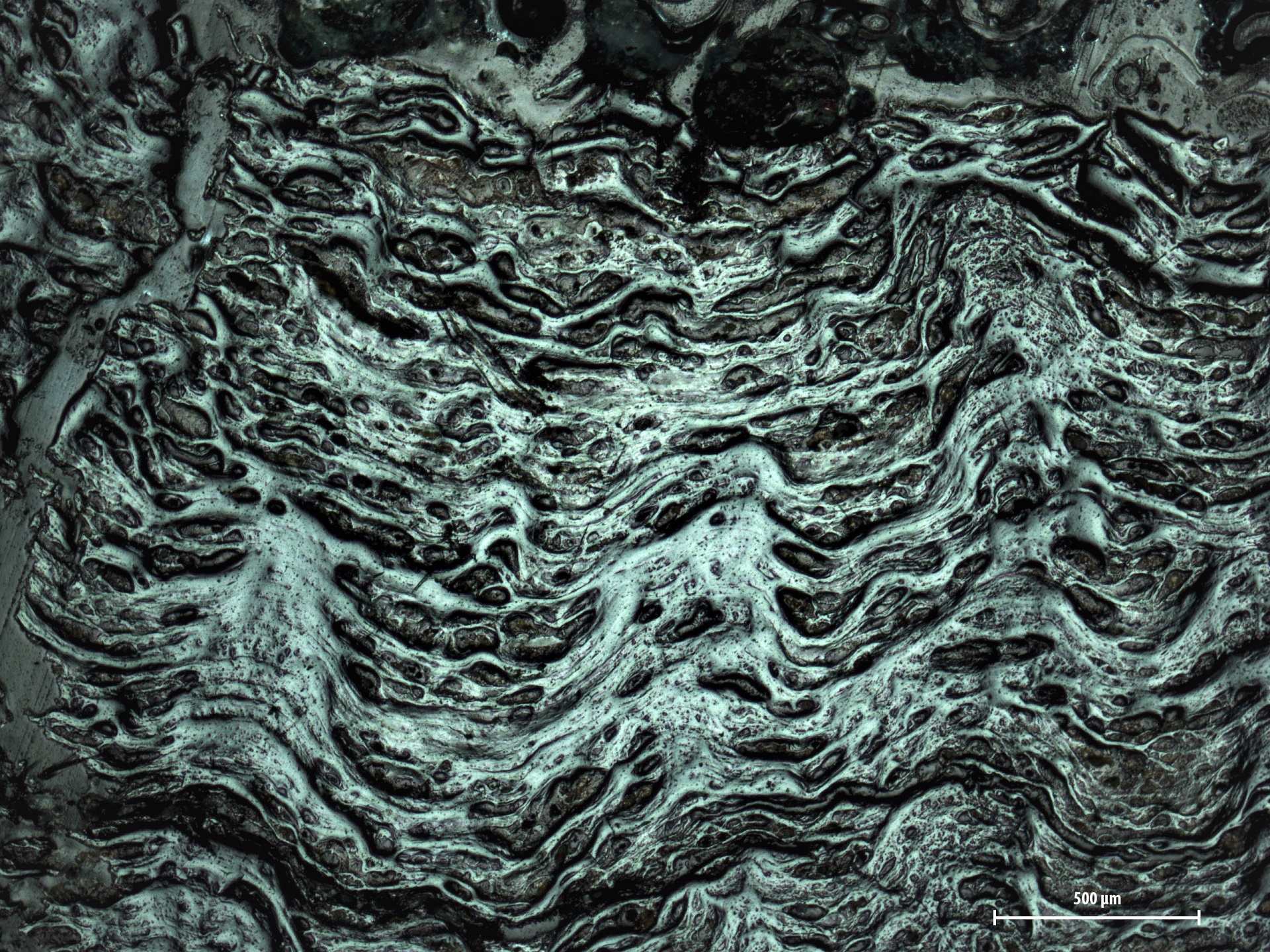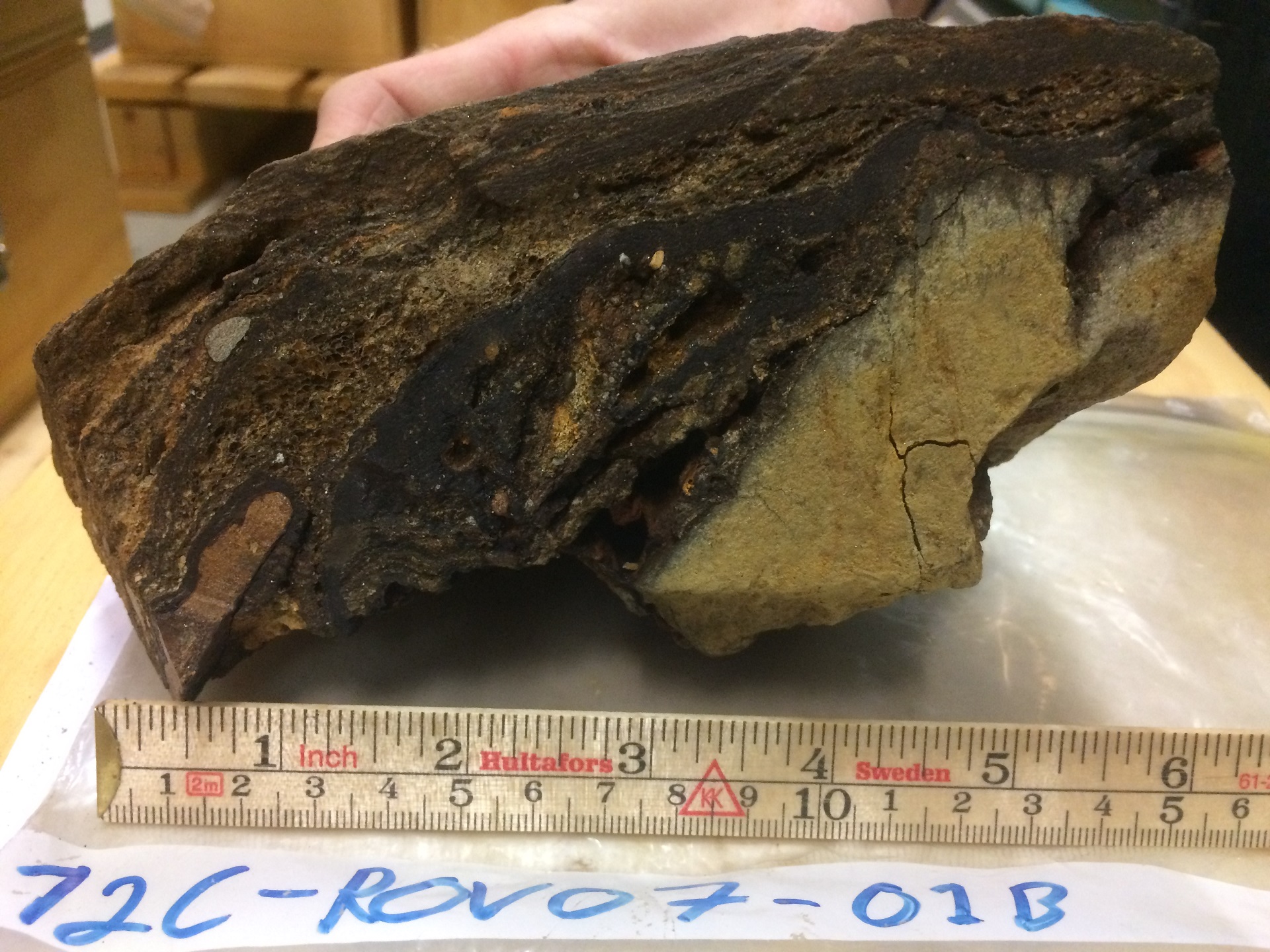Manganese crusts

Electron microscope photo of manganese crust. Shows precipitation growth layers. Photo: Stian Rolfsen Gilje (UiB).
The seawater contain dissolved metallic compounds, originating from both thermal springs and from run-off from land. Manganese crusts are precipitated from the seawater, and they slowly build up on underwater rock formations in the deep sea.
As a rule, the thickness increases by one centimetre every one million years. The Norwegian Offshore Directorate has proven crust deposits with thicknesses of up to 40 centimetres.
Manganese crusts contains mostly manganese and iron and smaller amounts of metals such as cobalt, nickel, copper, lithium, scandium and other rare earth elements.

Photo: The dark part of the sample in the photo shows manganese crust that has been deposited on the lighter coloured rock, which in this case is a basalt, the Norwegian Offshore Directorate.
Manganese nodules
Prospective manganese nodules are at present not found on the Norwegian shelf, but they are known from other places around the world. Nodules are formed on the seafloor, and have a chemistry that is similar to manganese crusts.
Updated: 21/12/2023